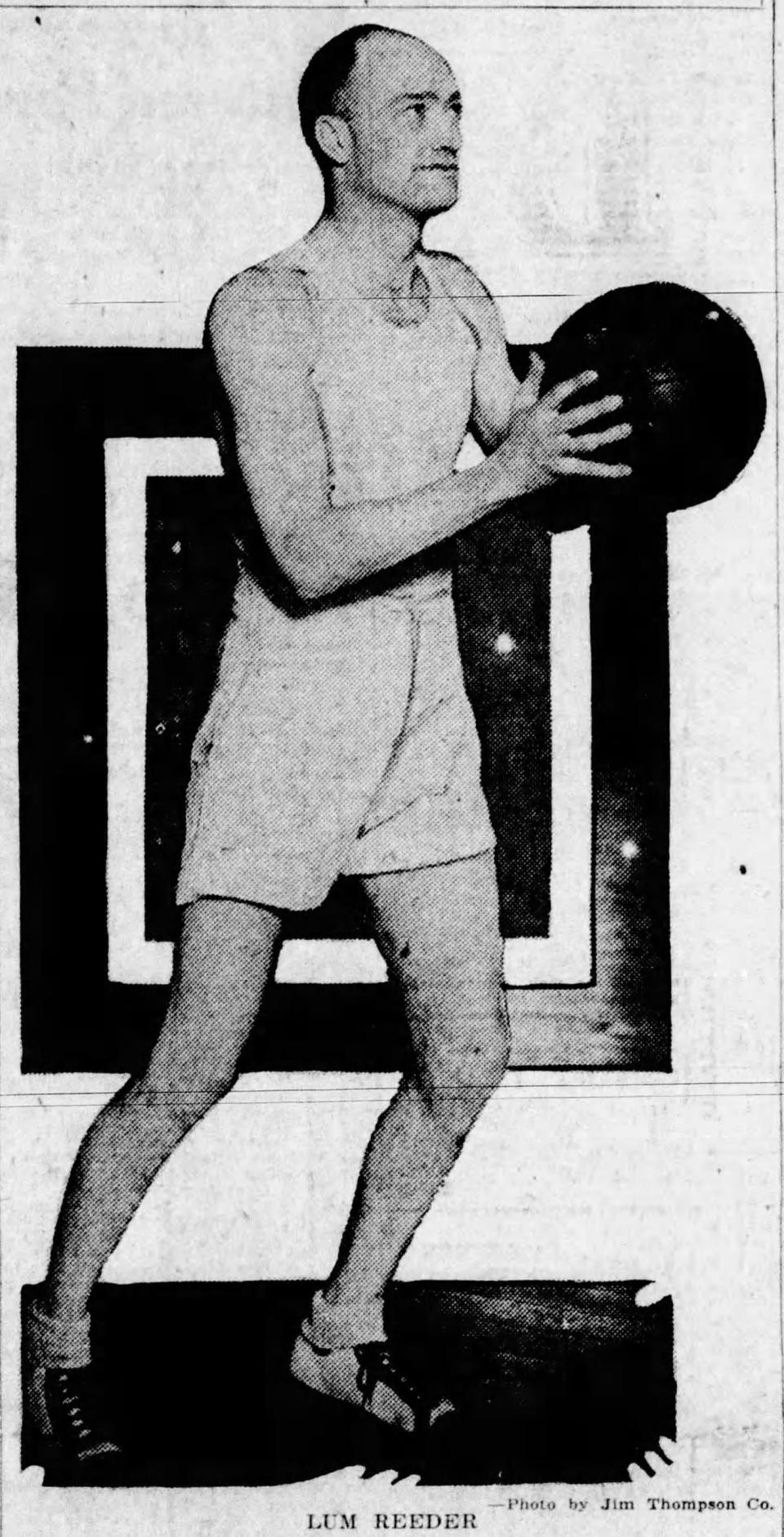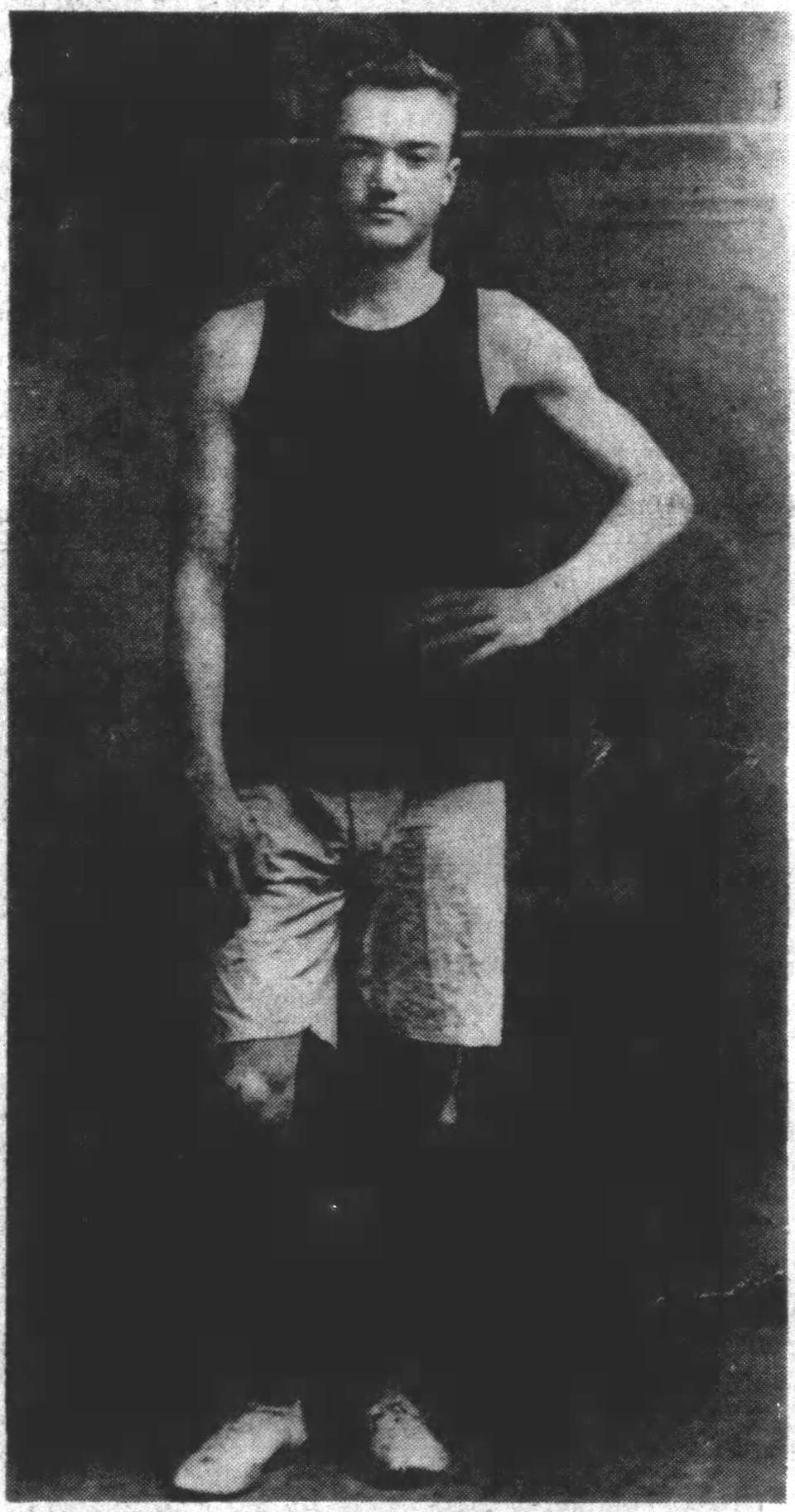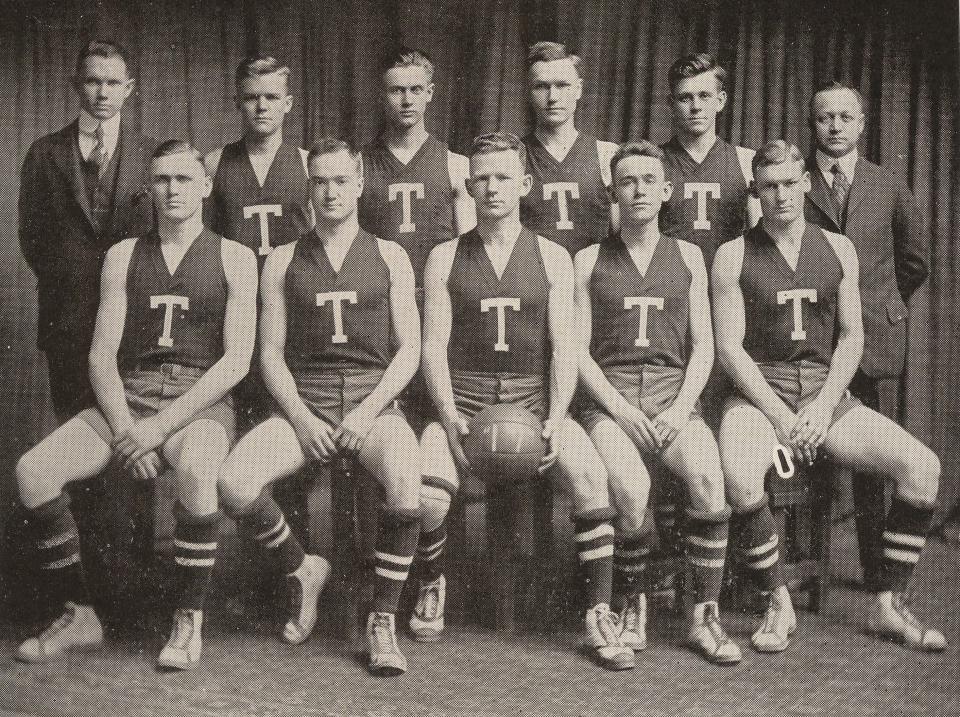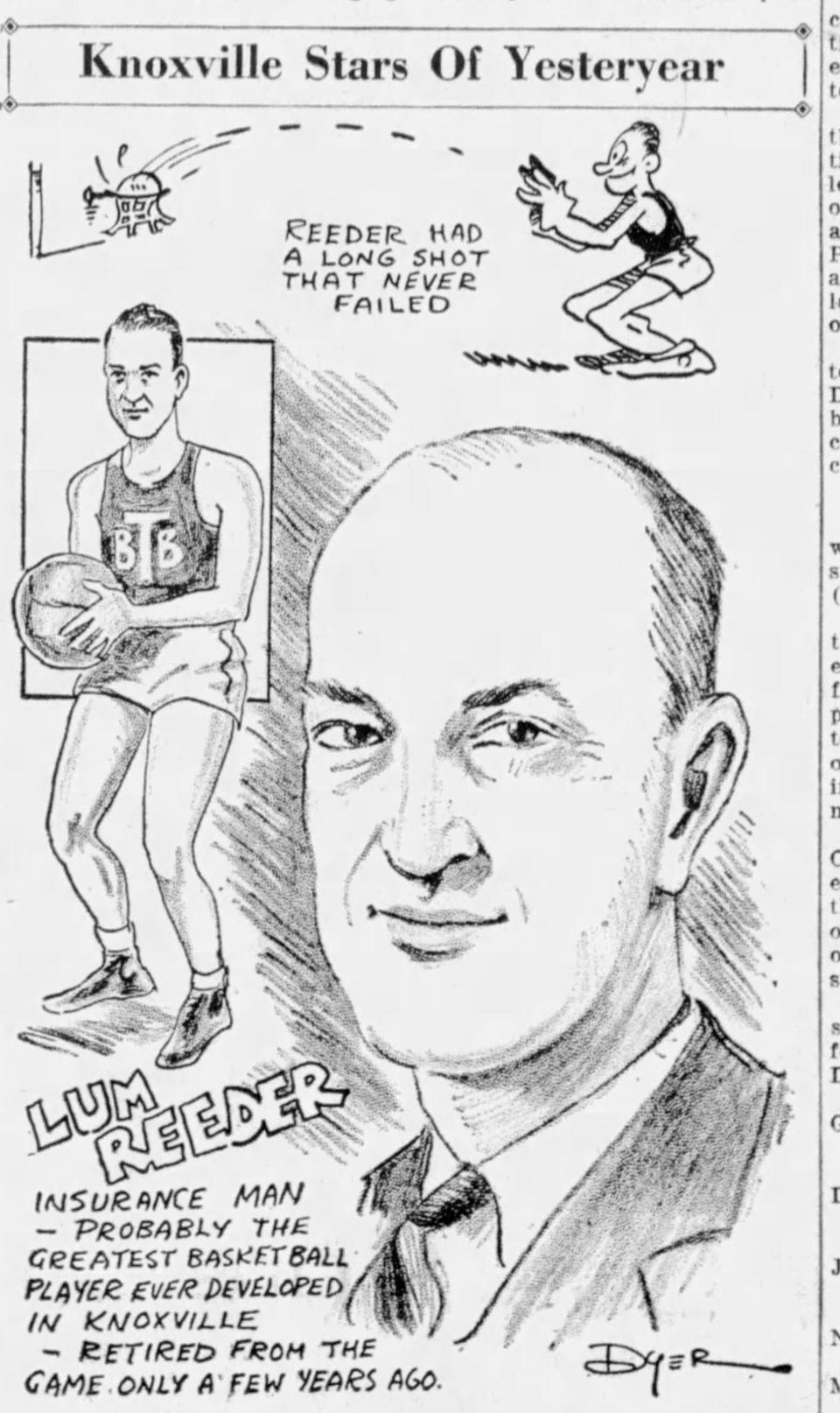How Tennessee's first basketball star learned to shoot on jail bars and took down Kentucky
As strange as it sounds, Kentucky football gave the Wildcats an advantage over Tennessee basketball more than a century ago.
In the 1910s, when the hoops rivalry was in its infancy, UK’s basketball lineup was loaded with brutish football players who manhandled the Vols.
UT relied on players who played only basketball. They struggled to score and cowered when the Wildcats bloodied their lips. The Vols lost 20-5 in the first game between the schools in 1910.
And when Kentucky got the best of UT during the football season, the intimidation factor grew on the hardwood.
But things changed for the Vols because of one hard-nosed, hot-shooting player – Columbus Alexander “Lum” Reeder Jr.
Reeder was tough. He was once knocked out by a hot-tempered referee with a right hook, but then rose to his feet and buried the game-winning shot.
Reeder was uniquely skilled. He used a dynamic one-handed shot in an era when flat-footed players slowly pushed the ball with two hands from their chest for a high-arching shot.
He honed his one-handed shot on a basket fixed to bars on the cell at the Knox County jail, where his father, Lum Sr., was the sheriff.

And Reeder was a shooting star. He floated in and out of the UT lineup, as other colleges, semi-pro and club teams and World War I pulled him away.
But when Reeder was on the court, Tennessee usually got the best of Kentucky.
In the first decade of the series, from 1910-19, UT had a 7-3 record against UK with Reeder. The Vols went 1-8 against the Wildcats without him.
A deep dive into the archives reveals the colorful story of UT’s first basketball star and how he impacted the rivalry with the Wildcats.
'Basketball players can't wallop football players'
Kentucky was 4-0 against Tennessee when Reeder and the Vols prepared to host the Wildcats in Knoxville for the first time in February 1915. They were set to play games on back-to-back nights as a must-see event in Knoxville.
UT’s on-campus gym was too small for productive practices, much less a game. So UT and UK played at the YMCA, where fans watched from overhanging balconies and packed every inch of the floor outside the court.
It was billed as another matchup of UK football players pushing around UT’s hoopsters.
“Basketball players can’t wallop football players on a basketball floor,” the Knoxville Journal & Tribune reported as an irrefutable fact.
The News Sentinel set up the game like this: “If the fans line up and imagine they are witnessing a football contest, don’t be surprised, for some five of these husky Kentuckians scampered around over Wait Field last fall (in a football game)."
But Reeder altered the storyline with an offensive flourish not yet seen in the series.
How Lum Reeder beat Kentucky for the first time
In game one, Reeder had 17 points as UT outscored UK 22-5 in the second half. He dominated William Tuttle, the bruising halfback for the UK football team. The Vols won 36-21 for their first victory in the series.
The Lexington Herald reported UT won because it made “lucky goals” and the Wildcats were tired from their train ride to Knoxville. But the Vols repeated the feat the next night.
In game two, Kentucky ratcheted up its physical style of play. The Journal & Tribune described it as a “fast and rough” game with 29 fouls. But Reeder was undeterred, scoring 16 points in UT’s 25-22 win.
He made every basket down the stretch for the Vols, including what the Journal & Tribune described as a “difficult goal.”
Considering the style of play at the time, that likely meant that Reeder made a shot while closely contested by a defender. In those days, teams passed the ball constantly until a shooter was wide open for a two-handed set shot from his chest.
Reeder’s one-handed shot gave him a little more room to adjust, and UK had no answer.

Reputation began shooting basketball in county jail
Don’t get the wrong idea. Reeder’s offensive onslaught looked nothing like scorers of today.
In those two wins over Kentucky in 1915, Reeder scored 33 points. That included seven field goals and 19 free throws.
In those days, a player was selected to shoot free throws anytime a foul was called, regardless of which player drew the foul. Reeder often got the assignment because of his unusually accurate shooting for the era.
But his reputation was well-earned.
Reeder’s grandfather and father both served as Knox County sheriff. While they chased criminals on horseback, Lum Jr. tossed a round pigskin with football-like laces into a basket fixed to jail bars.
Reeder drew a crowd as a kid playing in youth leagues. He led Central High and Knoxville High to East Tennessee championships years before the TSSAA prohibited players from easily changing teams.
At UT, Reeder was ahead of his time.
In the season before he arrived, the Vols averaged 29 points per game. But Reeder scored 27 points in his UT debut. In his third game, he scored 41 points in a win over Maryville, setting a school record that stood for 42 years. And he averaged 19 points per game during his freshman season.
Why Reeder went to Delaware, where baskets had no backboard
Reeder was touted as UT’s “goal-shooting hero,” the Journal & Tribune reported.
But as soon as UT celebrated its first wins over Kentucky, Reeder was gone. He left school a few days after those games, and the Vols suffered back-to-back losses to UK in Lexington.
Instead, Reeder played for the Knoxville Tigers, a local club team that traveled to Atlanta, Chattanooga, Asheville and other southern cities for tournaments.
That was common in those days. Basketball was a pastime, but players weren’t tied so strongly to their college teams. And Reeder played for multiple teams simultaneously throughout his life.
Nevertheless, the Vols were “crippled by the absence of Reeder,” the News Sentinel reported.
Reeder was known as one of the South’s best basketball players. And in 1916, he was lured to the University of Delaware for one season, where he earned All-Eastern honors.
But it was an awkward fit.
In a postcard, Reeder complained to the Journal & Tribune that Eastern teams passed very little and dribbled too much. It wasn’t the team-oriented game was he was accustomed to in the South.
He even played a few games for a Delaware semi-pro team that played without a backboard behind the basket. It may have reminded him of that basket on the jail bars from his youth, but it was too strange for him to stay.
UT surprisingly went 12-0 during Reeder’s season away, including an upset of Kentucky. But fans still longed to see the hometown hero in orange and white.
Reeder’s first of two comeback tours followed soon after.

Only 'Ernie and Bernie' did this at Tennessee
UT was revving up for its first road trip of the 1917 season at Kentucky. But first, it played some warm-up games at home.
In his first game back, Reeder looked like he had lost his touch. But after a deflated basketball was replaced, he got hot in a 36-11 win over Tusculum.
But Maryville took note of his return, so it surrounded Reeder and left his teammates open. They couldn’t make shots, and the Vols fell 23-15 in a shocking loss that put the season in doubt.
“The Vols will have a disastrous season unless they become more proficient in goal shooting, which is lacking,” the News Sentinel reported. “Lum Reeder is the only dependable man.”
But the Vols learned their lesson from the Maryville game. First-year coach John Bender shook up the starting lineup, adding more offense.
UK smothered Reeder, but the Vols compensated by making open shots. UT pulled out back-to-back wins in Lexington, beating UK 23-20 and 22-19.
Then the Vols beat the Wildcats twice in Knoxville with a 27-26 nailbiter and a 30-10 rout. Reeder led with 16 points in the latter game, as UK struggled to squelch the UT sharpshooter.
Ultimately, Tennessee won five straight over Kentucky during that stretch. It was the Vols’ longest winning streak in the rivalry until Ernie Grunfeld and Bernard King teamed up to win five straight in the 1970s.
How World War I took Reeder out of Vols lineup
Reeder was pulled away from the Vols again when the United States entered World War I.
He enlisted in the Navy and commanded a patrol boat protecting the Gulf of Mexico from German submarines, which sank 10 American vessels off the North Carolina coast and threatened to do more.
But Reeder played on a Naval basketball team in New Orleans, keeping his skills ready for another return to UT.
Without Reeder, the Vols lost all four games to UK in the 1917-18 season. But after being honorably discharged, he picked up where he left off in 1919.
UT routed UK 40-22 to end its losing streak, but Reeder missed the game due to illness. Nevertheless, the Vols made the rivalry competitive by the end of the decade, and the X-factor was usually Reeder.

What happened to Lum Reeder?
The Reeder family continued to be prominent in Knoxville and for the Vols.
Lum’s two brothers played multiple sports at UT, including basketball. Their sister was a star basketball player at Knoxville High. And several cousins filled the UT and high school rosters for decades.
Lum married the former Kathleen Fleming, who was honored as Knoxville’s First Lady in 1951, a high social title of the time.
Their two sons, Fleming and Robert, were members of the UT track team. Fleming Reeder became a successful filmmaker, winning an award at Cannes Film Festival and helping create documentaries about the Oak Ridge National Laboratory.
After finishing at UT, Lum remained a fixture on the Knoxville hardwood. He played basketball in independent leagues into the 1930s. He had a successful career in insurance and real estate, and he served as Knox County trustee in the 1940s.
Lum kept close ties with the Navy. During World War II, he was the civilian chairman of the Navy Board of East Tennessee. He later served as director of the Naval Reserve Unit and president of the Knoxville Navy Club.
He died at 84 years old in 1981.
Lum suffered blindness for seven years before his death. But before losing his sight, he was honored with surviving members of the 1917 team at a Vols basketball game in December 1973.
Their 4-0 record against Kentucky that season was the first accomplishment mentioned among their feats.
Tennessee’s last home game against Kentucky during Lum’s life was a year before his death.
The No. 2 Wildcats were a heavy favorite. But the undermanned, underdog Vols pulled off a 49-47 upset when Howard Wood buried the game-winning shot from the baseline before the final horn to shock Kentucky.
It was the kind of shot Lum Reeder would have made.
Adam Sparks is the Tennessee football beat reporter. Email adam.sparks@knoxnews.com. Twitter @AdamSparks. Support strong local journalism by subscribing at knoxnews.com/subscribe.
Get the latest news and insight on SEC football by subscribing to the SEC Unfiltered newsletter, delivered straight to your inbox.
This article originally appeared on Knoxville News Sentinel: Tennessee basketball: First Vols star beat Kentucky, shot on jail bars
